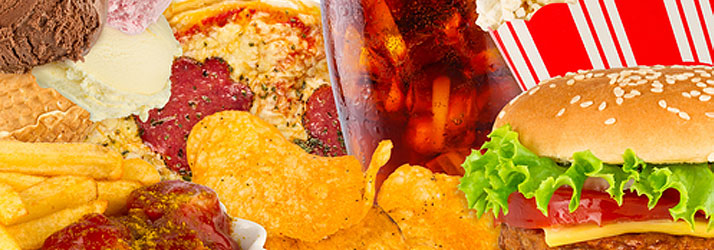On Sugar in Scotts Valley CA

Take a look at the sweet truth about sugars you need to know from our Scotts Valley CA chiropractic clinic.
In light of the nation’s increase in obesity, diabetes, metabolic syndrome, and hypoglycemia, in children and adults, it is incumbent upon us to understand more about sugars. It is so important to be aware of what you are putting in your body and ITS EFFECT ON YOUR HEALTH. So here are the good and the bad about sugars everyone needs to be aware of to help maintain their health.
The USDA, for the first time ever, has submitted dietary guidelines regarding sugar consumption.
The Recommedations In Scotts Valley CA
The recommendation is no more than 10% sugar eaten of your total daily calories consumed. That is equal to 180 calories or 45 grams a day for women and 200 calories or 50 grams for men.
To put that in perspective, the average American eats a whopping 82 grams of added sugar each day according to the Center for Disease Control. Nancy Appleton, PhD states that there are 141 ways that sugar adversely affects your health. The good news is that it is 100% possible to cut back without sacrificing the deliciousness of all of your favorite foods.
And since this article references the glycemic index (GI), a brief explanation is in order. The GI is a measure of how quickly foods raise blood sugar levels. Glucose is given a GI rating of 100. If a food has a GI score of 50, then it raises blood sugar half as much as pure glucose. So the lower the score, the more healthy it is for you. We all should, and especially diabetics, always strive to eat foods with a low glycemic index.
Bad Sugars
- High Fructose Corn Syrup: It is the worst sugar to eat/drink, ever. Make every effort to avoid it. *see notes below
- Processed Honey: usually contains up to 20% Karo syrup and has little nutrients.
- Table Sugar (Sucrose): Despite that this disaccharide is composed of glucose and fructose, and is found in sugar cane, sugar beets, molasses, maple syrup, fruit, vegetables, and honey, it is completely devitalized of ALL nutrients when it is processed.
- All Artificial Sweeteners: regardless of which colored packet, blue, yellow, or pink.
- Agave Nectar: the evidence leans toward more inferiority nutritionally.
- Brown Sugar: nutritionally speaking, same as processed table sugar, devoid of all nutrients; vitamins, minerals, antioxidants, enzymes, fiber, and phytonutrients.
Notes On High Fructose Corn Syrup
High Fructose Corn Syrup (HFCS) Chemically speaking, because of its processing, it turns out to become an industrial product, not real food. It’s not metabolized by the body like cane sugar. HFCS causes or is associated with: heart disease, obesity, diabetes, cancer, dementia, liver failure, tooth decay, and more. It increases triglycerides and LDLs (the bad cholesterol). And it is also loaded with a toxic metal, mercury; up to 570 mcg per gram. To add insult to injury, the corn that’s used in HFCS, comes from genetically modified corn which is fraught with its own well-documented health concerns.
Good Sugars
- Stevia: an herb *see notes below
Organic Raw Honey: contains 22 amino acids, 27 minerals and 5,000 enzymes - Coconut Sugar: *see notes below
- Xylitol: *a sugar alcohol with a glycemic index of only 13.
- Sorbitol: *see notes below
- Malitol: *see notes below
- Brown Rice Syrup: a complex sugar that is slowly absorbed so with less spiking of blood sugar.
- Fruit Juice (100%): in moderation
- Organic Sugar Cane Juice: has protein, fiber, phytonutrients, polyphenols, minerals and antioxidants.
- Molasses: an unrefined natural sweetener with minerals and B vitamins.
- Maple Syrup: also with minerals and antioxidants.
Notes On Stevia:
Stevia is a green, leafy plant native to South America. It is a 100% natural, zero calorie sweetener with several health benefits which have been confirmed in human studies. Use sparingly as it is 100 times sweeter than sugar. It has a low glycemic index. People often confuse the Brand name sweetener “Truvia” with stevia, but they are not the same. Truvia is a blend of compounds, 1 of which is extracted from stevia leaves. Studies show it lowers blood pressure, blood sugar and insulin levels after a meal. It did this better than aspartame and sucrose. Stevia has also been shown to have anti-inflammatory, anti-cancer, diuretic and immune boosting effects. It has not been shown to cause any adverse effects on your health. I hereby declare stevia “the king of sweeteners”. Learn to enjoy it.
Notes On Coconut Sugar:
Coconut sugar is a versatile substitute for conventional cane sugar, especially for baking purposes.
Notes On Xylitol:
Xylitol is a sugar alcohol with a glycemic index of 13, it tastes like sucrose but has half the calories and tastes about twice as sweet. It has little effect on insulin levels. You can find xylitol in berries, corn, mushrooms and oats. It has a lesser absorption rate than sorbitol so is generally good for diabetics. It may exacerbate pre-existing intestinal distress by causing symptoms such as; diarrhea, bloating and gut pain.
Notes On Sorbitol:
Sorbitol is also a sugar alcohol with a glycemic index of 9. Found mainly in stone fruits, manufacturers use it in diet sodas, sugar-free ice cream and desserts, mints, cough syrups and chewing gum. It’s about half as sweet as sucrose based on calories per gram. It has potential of causing gastro-intestinal distress especially in patients with inflammatory bowel syndrome, (IBS). Because it is less sweet than xylitol, people are more likely to consume greater amounts of sorbitol to attain the desired level of sweetness. Companies are likely to use more of it in products. It does not affect insulin or blood glucose levels which can be good for diabetics too.
Notes On Maltitol:
Maltitol is very similar to actual sugar in terms of mouth feel, taste and even cooking performance. It has a glycemic index of 36. Since it’s 90% as sweet as sugar with half the calories, manufacturers use copious amounts of maltitol in sugar-free desserts and other products. It seems ok while your eating the stuff. But what happens an hour later, once all that alcohol reaches the bacteria in the colon, fermentation may occur; resulting in bloating, diarrhea and abdominal pain.
There are others, but these are the most popular sugar alcohols. Generally speaking, the literature shows that sugar alcohols are relatively safe. Most people will not see spikes in their blood sugar especially healthy people with healthy digestion.
Preferably, one should attempt to use non-caloric or artificial sweeteners/sugar substitutes as little as possible. But if you desire a sweet food and are concerned that you might be derailed from maintaining a healthy diet, sugar alcohols may be worth experimenting with, especially xylitol. There is no evidence that these sweeteners induce sugar cravings, cause diabetes or cancer.
Remember, there is a difference between added processed sugar and naturally occurring sugars. Fruits and vegetables have naturally occurring sugar that one should not be overly concerned about. Because fruits and vegetables contain other nutrients like fiber and healthy fats, the liver doesn’t process the sugar in the same way it would a cookie or a candy bar. In other words, the sugar in apples and peppers won’t contribute to weight gain and diabetes like sugar in a soda will.
Diabetics can enjoy most sugars on the “good list” in moderation. Test yourself.
HOT TIPS to REDUCE SUGAR CONSUMPTION
- Stop drinking soda! According to The National Institute of Health, the third largest source of food calories in an American’s diet comes from soda; also a huge source of sugar! One can of Mountain Dew delivers 52 grams of sugar, more than the daily maximum!
- And whether you are buying applesauce, almond milk, nut butter or canned fruit, look for an unsweetened variety. These are low on the glycemic index.
- Always look for labels stating “no added sugar and unsweetened” It will save you tons of empty calories over the course of one year.
- Stack up on “nature’s candy”, fresh fruit that is organically grown. In fact, eating fruit is one of the healthiest ways to satisfy a sweet craving.
- Dried and canned fruits beware! Food manufacturers often add processed sugar to canned fruit and add syrups to juice boxes to extend their product’s shelf life and ‘improve the flavor’. Besides, dried fruits naturally contain more sugar, albeit fructose, compared to fresh fruit. So stay clear of canned foods with syrup and eat dried fruit sparingly.
- Chew fennel seeds, especially after dinner to shake any post-dinner dessert cravings. And as a bonus, fennel seeds are known to stop belly bloat and even act as an appetite suppressant.
- Trick your taste buds. Next time you’re having a hard-to-ignore sweet tooth attack, fix yourself a cup of tea. Mint, ginger, cinnamon, and chai teas will help you fend off those longings by hitting that “sweet spot” without the sugar overload.
- If you need to sweeten it up still, just add a teaspoon of organic unfiltered honey.
- Sweeten coffee with cinnamon, stevia, or a little xylitol.
- Sweeten cereals with fresh fruit. Try a veggie omelet topped with ground pepper, scallions, cheddar cheese, or a fried egg instead of always having fruit and honey in the morning.
- Buy plain yogurt and flavor it with fruit and spices like cinnamon and nutmeg. Also, studies show that cinnamon may aid in blood sugar control, boosting metabolism, making it a win-win for achieving and maintaining a normal weight.
- Bake cookies with unsweetened applesauce, yielding 100 calories rather than hundreds of calories using processed sugar. A 1 to1 ratio works fine, swapping applesauce for sugar. But for every cup of applesauce, you use, reduce the amount of liquid in your recipe by ¼ cup.
- No need to add sugar to tomato sauce because tomatoes are naturally sweet. Try Ragu’s no sugar added tomato basil sauce or combine olive oil and herbs (like oregano and basil) with fresh tomatoes to make your own sauce.
- Two tablespoons of ketchup have just over 7 grams of sugar, while the same serving of salsa carries just 1.4 grams of sugar according to the USDA.
- Conventional peanut butter spreads rely on sugar and trans-fats to give them playground appeal. So stick with an all-natural variety made from nuts and a bit of salt. The fat and protein of nuts help ward off debilitating blood sugar crashes by slowing the digestion of sugar.
- Drink green tea with lemon, mint, or the flavor of your choice.
- Because it is so nutritious, in so many ways, we must all make every effort to learn to enjoy it.
- Is ice cream your dietary downfall? Happily, It doesn’t have to be. There are many lower-sugar options in the freezer. Swap Haagen Dazs Butter Pecan (1/2 cup, 300 calories, 17 grams sugar) for example, to a Snicker’s Mini’s Ice Cream Bar (90 calories, 8 mg sugar)
In the early 1900’s, the average amount of sugar consumed per person, per year, was 15 pounds. These days it is in the neighborhood of 140 pounds! So I encourage you to get in the HABIT of reading labels.
OFFICE HOURS
Monday
10:00am - 6:00pm
Tuesday
10:00am - 3:00pm
Wednesday
10:00am - 6:00pm
Thursday
10:00am - 6:00pm
Friday
10:00am - 3:00pm
Saturday & Sunday
Closed
Santa Cruz Holistic Wellness
5437 Scotts Valley Dr
Scotts Valley, CA 95066




